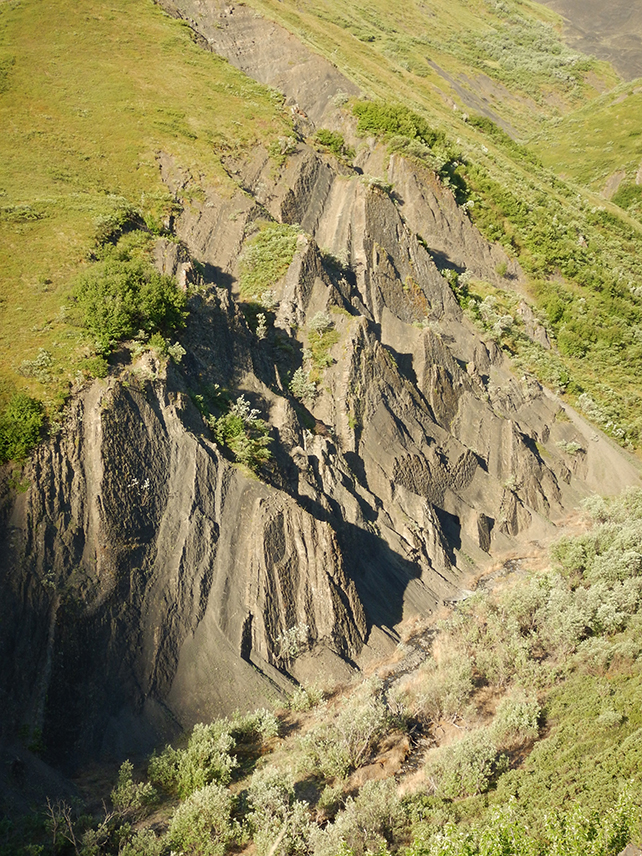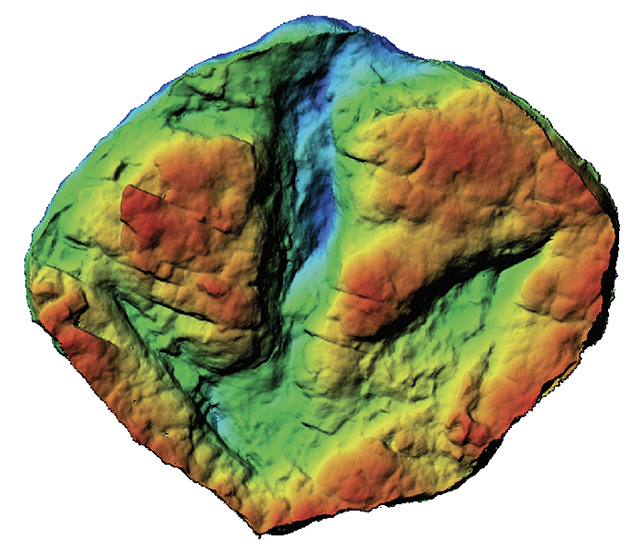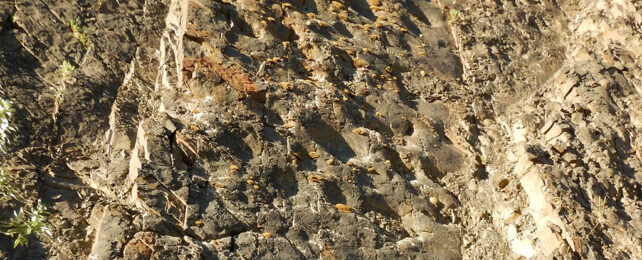Researchers have reported on what they're calling the 'Coliseum' site of dinosaur tracks, a large and multi-layered rock formation in Denali National Park in Alaska that carries markings dating back some 70 million years.
A team of US researchers has been exploring the site, which was first discovered in 2010 – and it contains a fascinating treasure trove of dino footprints.
There's evidence for ornithopods, ceratopsids, and theropods, covering many different dinosaur types and species. That's testament to how busy this site, most likely a watering hole on a large flood plain, would have been over the years.
Measuring some 7,500 square meters (80,729 square feet) in terms of total area – so a little bigger than a standard soccer pitch – the rocky outcrop stands about as tall as a 20-story building, with tracks spread all across its various flatirons.

"It's not just one level of rock with tracks on it," says paleontologist Dustin Stewart, who led the study while at the University of Alaska Fairbanks.
"It is a sequence through time. Up until now, Denali had other track sites that are known, but nothing of this magnitude."
While initial observations only revealed a trackway at the bottom of the Coliseum cliff, experts soon spotted other markings. The tracks are a combination of impressions made in soft mud that was then hardened and covered over, and track impressions preserved because they were subsequently filled in by sediment.
"They are beautiful," says paleontologist Pat Druckenmiller from the University of Alaska Fairbanks. "You can see the shape of the toes and the texture of the skin."

These different processes of preservation would've happened over thousands of years as tectonic plates slowly pressed into each other and buckled up, folding and tilting the ground to create the Alaska Range.
And the site hasn't just given us a wealth of dinosaur tracks: fossilized plants, grains of pollen, and traces of freshwater shellfish and invertebrates have also been found in the area. It's the largest known site of this type in Alaska.
Back in the Late Cretaceous, this area would've been busy with life, with ponds and lakes nearby. The climate would've been warmer, more Pacific Northwest than Alaska, with forests of coniferous and deciduous trees.
What sites like this can do is give us a window back into that time and what it was like, and the researchers say there's "a lifetime" of exploring left to do in the park. We can expect to hear much more from these researchers in the future.
"It was forested and it was teeming with dinosaurs," says Druckenmiller.
"There was a tyrannosaur running around Denali that was many times the size of the biggest brown bear there today. There were raptors. There were flying reptiles. There were birds. It was an amazing ecosystem."
The research has been published in Historical Biology.
